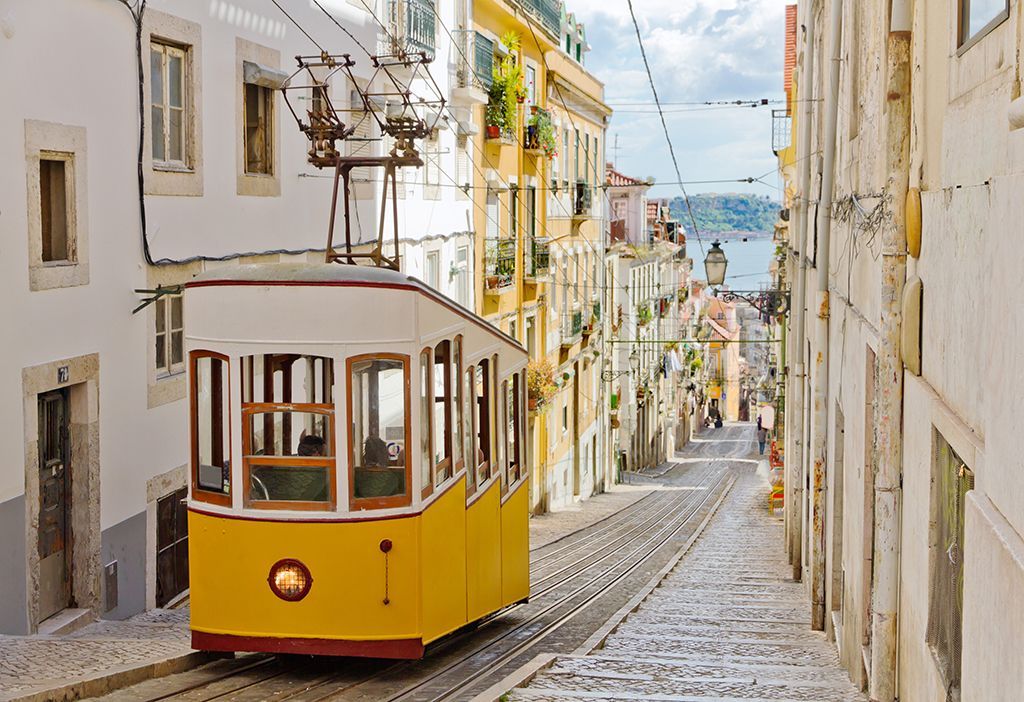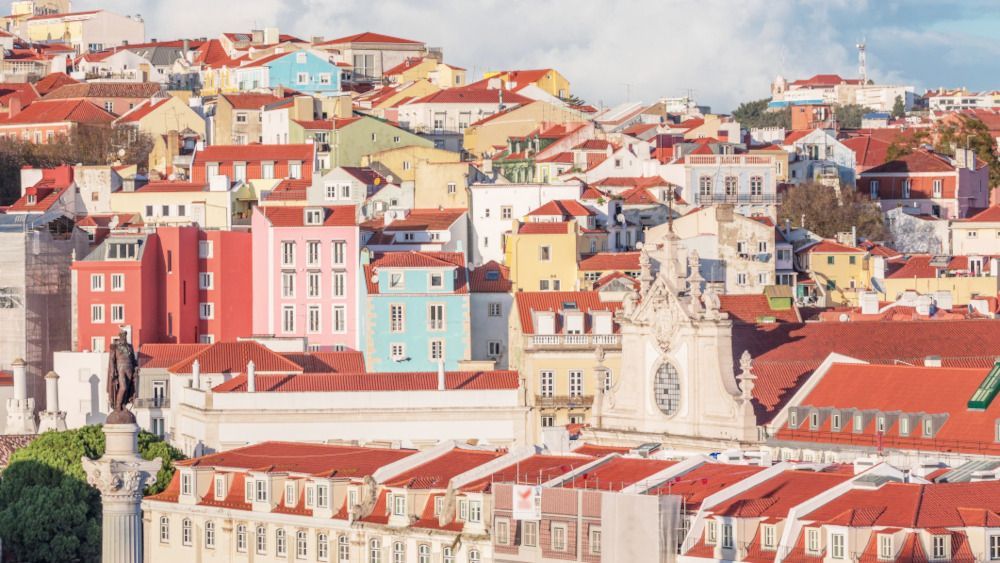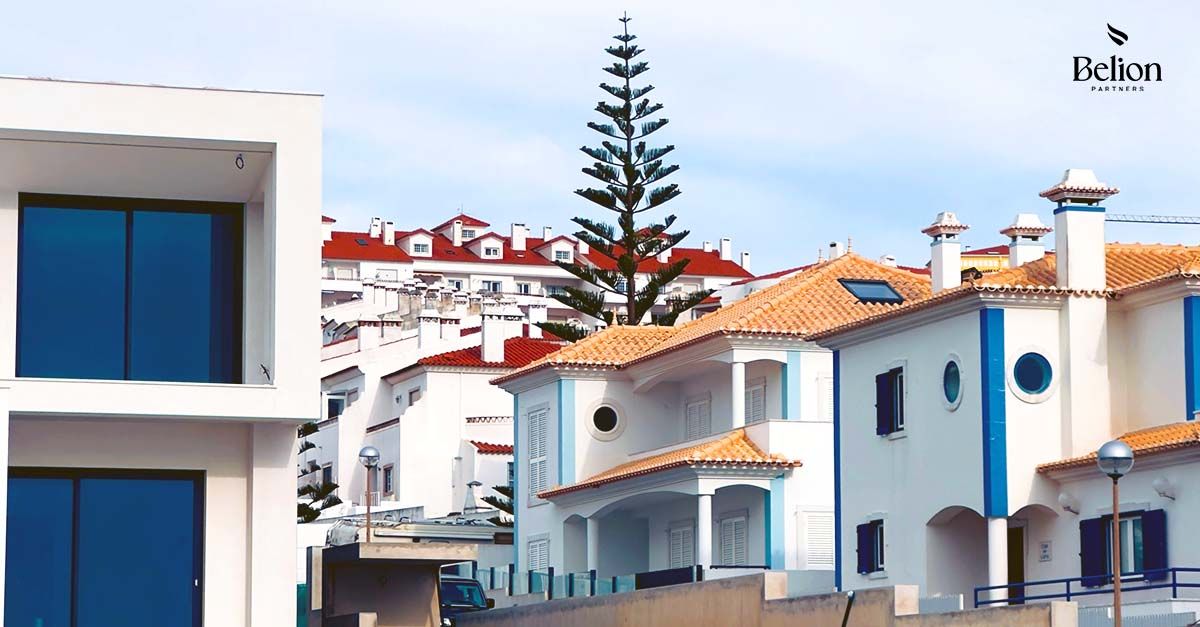Neighbourhoods in Lisbon
To welcome the wonderful month of September, we will be delving into the premier destinations for expats to reside in Lisbon and immerse themselves in the vibrant atmosphere of Portugal's bustling capital.
A plethora of options await if you seek to dwell in close proximity to the city's renowned landmarks or prefer a more serene place outside the urban centre. Whether you favour bustling commercial and entertainment districts or tranquil residential areas boasting scenic coastal vistas, you are guaranteed to find a home that perfectly complements your lifestyle.
Central Lisbon
Baixa
Baixa is a popular neighbourhood in Lisbon that is highly sought after by property investors. It is located in the heart of the city and is known for its many shops, eateries, and beautiful plazas: Restauradores Square, Praça do Comércio, and Rossio Square. Keep in mind that the area can get crowded during the daytime due to these attractions, but if you are looking for a truly bustling Lisbon experience, Baixa is a great choice.
Bairro Alto
The district in the upper-town is renowned for its excellent nightlife, attracting both locals and foreign partygoers. Furthermore, the district is well-known for its beautiful architecture, charming narrow streets, and inexpensive eateries known as "tascas". Additionally, you can easily access the Elevador da Glória, which is a restored, old-fashioned tram made of wood that connects Baixa to Bairro Alto within this area.
When you get to the top, you can see an amazing view of the city from Miradouro de São Pedro de Alcântara, which is a pretty garden with a famous observation point in Lisbon. Since there is live music played loudly until late at night, this vibrant area may not be the best choice for light sleepers. Additionally, people drinking on the streets can sometimes cause a messy scene the following morning.
Príncipe Real
The neighbourhood of Príncipe Real, which translates to Royal Prince, is considered to be one of the trendiest areas in Lisbon. This is because it boasts popular restaurants, bars, art galleries, and unique shops, making it highly desirable for residents. The diverse population in the district offers a variety of international cuisine options at local restaurants. Plus, it is conveniently located within walking distance to the city centre, making it appealing to expats. However, keep in mind that housing may be pricey due to the popularity of the neighbourhood.

North Lisbon
Avenidas Novas and Alvalade
Avenidas Novas district has spacious apartments that are popular among middle and upper-middle-class workers, although they are relatively expensive. The area also houses multiple universities, so many students and young professionals reside there. The architecture in the local area is mostly modern, and it includes some uninteresting office buildings. This means that the area may not be very attractive from an aesthetic point of view. However, there are still some great restaurants to try out and popular shopping malls to visit. If you are looking for a lively social scene, this may not be the best option.
The neighbourhood of Alvalade is green and residential and has Parisian-style boulevards along with charming restaurants and cafes. It is located 20 minutes away from the city centre by metro and is a great option for families who want a quieter lifestyle.
Saldanha and São Sebastião
Saldanha is a chic locality in close proximity to the city centre, offering a blend of contemporary and traditional architecture. The area has a charming atmosphere with leafy streets and adorable boutiques, with the central point being the roundabout Praça Duque de Saldanha. You can find many restaurants and cafés there, including the famous Pastelaria Versailles, catering to tourists, professionals, and locals alike. Saldanha is also becoming increasingly popular among startups and digital nomads.
The neighbourhood of São Sebastião is located near the city centre and features a blend of old and modern architecture. It is an upscale area. El Corte Inglès department store is situated in this area. Parque Eduardo VII is located nearby, providing a vast green area within the city with well-maintained gardens and stunning views of the Tagus River. The Gulbenkian Foundation is conveniently situated in the neighbourhood and offers contemporary art exhibitions, musical performances, and beautiful gardens.
Arroios
Although it is within walking distance of Saldanha, Arroios has a distinct character of its own. Avenida Almirante Reis, which passes through the heart of the neighbourhood, used to be one of Lisbon's most notorious streets. It has since undergone significant improvement and is now a lively, multicultural area popular with students and expats seeking more affordable living options in Lisbon. This area has local markets, unique stores, excellent transportation links to the rest of the city, and an authentic atmosphere. Additionally, there are a handful of green spaces to enjoy. It takes roughly 30 minutes to reach Praça do Comércio on foot. While some side streets may not be safe, staying to the main road is a safe choice.
Northeast Lisbon
Parque das Nações
Parque das Nações is a lively and contemporary neighbourhood situated a bit further away from the city centre. It is one of the newest and trendy parts of the city, which was constructed in 1998 for the World Exhibition. The area is equipped with upscale restaurants, rooftop bars, and hosts significant events like international fairs and concerts. Families looking to enjoy modern amenities while also escaping the busy city centre often visit this flat neighbourhood with lots of green spaces, urban art, and cycle lanes.
Although Parque das Nações has good transport connections to the city centre, it may not be the best fit for expats seeking a close-knit community atmosphere.
South Lisbon
Alfama and Graça
Alfama, which is Lisbon's oldest neighbourhood, is renowned for hosting the iconic 11th-century São Jorge Castle. Its charming alleys are filled with cafes and traditional craft shops. The district is home to both young professionals and long-established families. In the past, Alfama was known for being a low-income and unclean area but now it's become popular among both locals and expats. If you plan on living here and need a mode of transportation, be aware that narrow streets make having a car impractical. Additionally, while there are good deals to be had, many buildings in the area require significant renovation.
In the historic district of Graça, located on the opposite side of the castle, there are spectacular views and old-town charm, but limited parking and green space. So, if you are planning to have your own transport, it might be an issue.

West Lisbon
Belém and Restelo
Although located close together, Belém and other areas in Lisbon are vastly different. Belém is a charming district known for its iconic tourist attractions, including the 16th-century Torre de Belém. Unlike other areas, it offers green parks, open spaces, and stunning views along the Tejo Estuary, which can be attractive for expats who want to live outside the centre.
Restelo is an upscale area that has many luxurious villas surrounding the Estádio do Restelo, an oval-shaped football stadium. Living here requires a significant financial investment, but if you are looking for an affluent lifestyle, then this area could be your ideal destination.
Campo de Ourique
Campo de Ourique is a residential neighbourhood that is well-liked by middle-class families who enjoy a mix of traditional and modern elements. The area features a grid pattern and includes both 19th-century buildings and contemporary architecture. Visitors can also enjoy a variety of dining options, from traditional shops to modern brands and a large food market. Jardim da Parada is a small central park that attracts people of all ages, especially families. While it is a delightful and tranquil neighbourhood to reside in, property prices can be a little pricey. The absence of metro stations can also make transportation to the city centre a bit inconvenient, but it is accessible through nearby highways and several bus routes.
Santos and Lapa
Santos is a neighbourhood in Lisbon that is both old and expensive. It is liked by the local middle-class people, young adults, and teenagers who enjoy the party scene. The area is home to IADE, where numerous design students pursue their studies. During the day, tourists visit the old churches and museums, giving the district a lively ambiance. However, in the evenings, it turns into a party destination with numerous bars and nightclubs that attract many visitors.
The hilly neighbourhood of Lapa is known for its impressive palaces and embassies. It is a popular spot for upscale retirees who prefer to settle in spacious mansions. However, the lack of metro stations in the area could be a hindrance to traveling around easily. So, if you decide to reside here, you will have to use trams and buses as your means of transportation.
Alcântara
Alcântara is located to the west of Santos and has a variety of local restaurants, shops, and cafés to explore. Although it was previously known as one of the more industrial neighbourhoods in the city, significant efforts were made to revitalize the area. As a result, Alcântara has become a desirable place to live in Lisbon. Currently, this area of the city is housing start-ups, trendy restaurants, and casual nightlife. However, not many tourists tend to visit this specific part of the city, except if they plan on going to LX Factory or one of the museums in the vicinity.
Lisbon stands out as one of the most desirable places to reside worldwide due to its excellent safety record, breath-taking natural beauty, rich cultural heritage, cost-effectiveness, and high standard of living. It is worth noting, however, that there might be distinctions in the living experience between expatriates and native Portuguese residents.
To facilitate your transition to Lisbon, acquiring knowledge about the city and its customs is of paramount importance. Take the opportunity to acquaint yourself with the local language and immerse yourself in the cultural fabric. By adopting an open mindset, maintaining a positive outlook, and embracing the spirit of exploration, you can swiftly adapt to your newfound local lifestyle.
Portugal proves to be an ideal destination for highly skilled professionals, entrepreneurs, freelancers, remote workers, digital nomads, and retirees. The relocation process to this thriving nation is remarkably hassle-free, thanks to its streamlined procedures and wide array of residence permit options. Moreover, upon completing a five-year tenure as a legal permanent resident, you may potentially qualify for Portuguese citizenship through the residency program.
Should you have any further inquiries regarding your move to Lisbon, please do not hesitate to reach out. We are delighted to offer our assistance and support.




